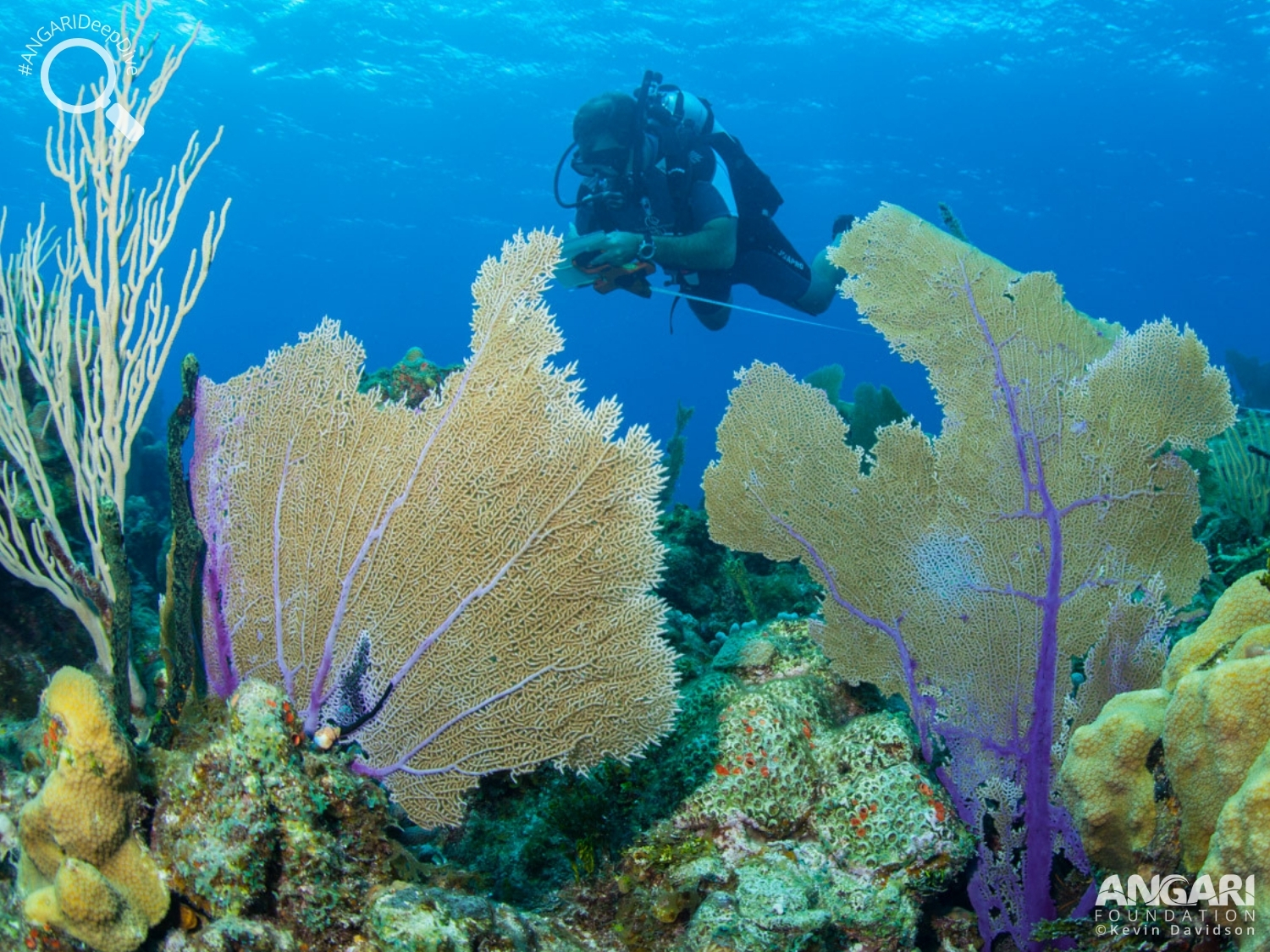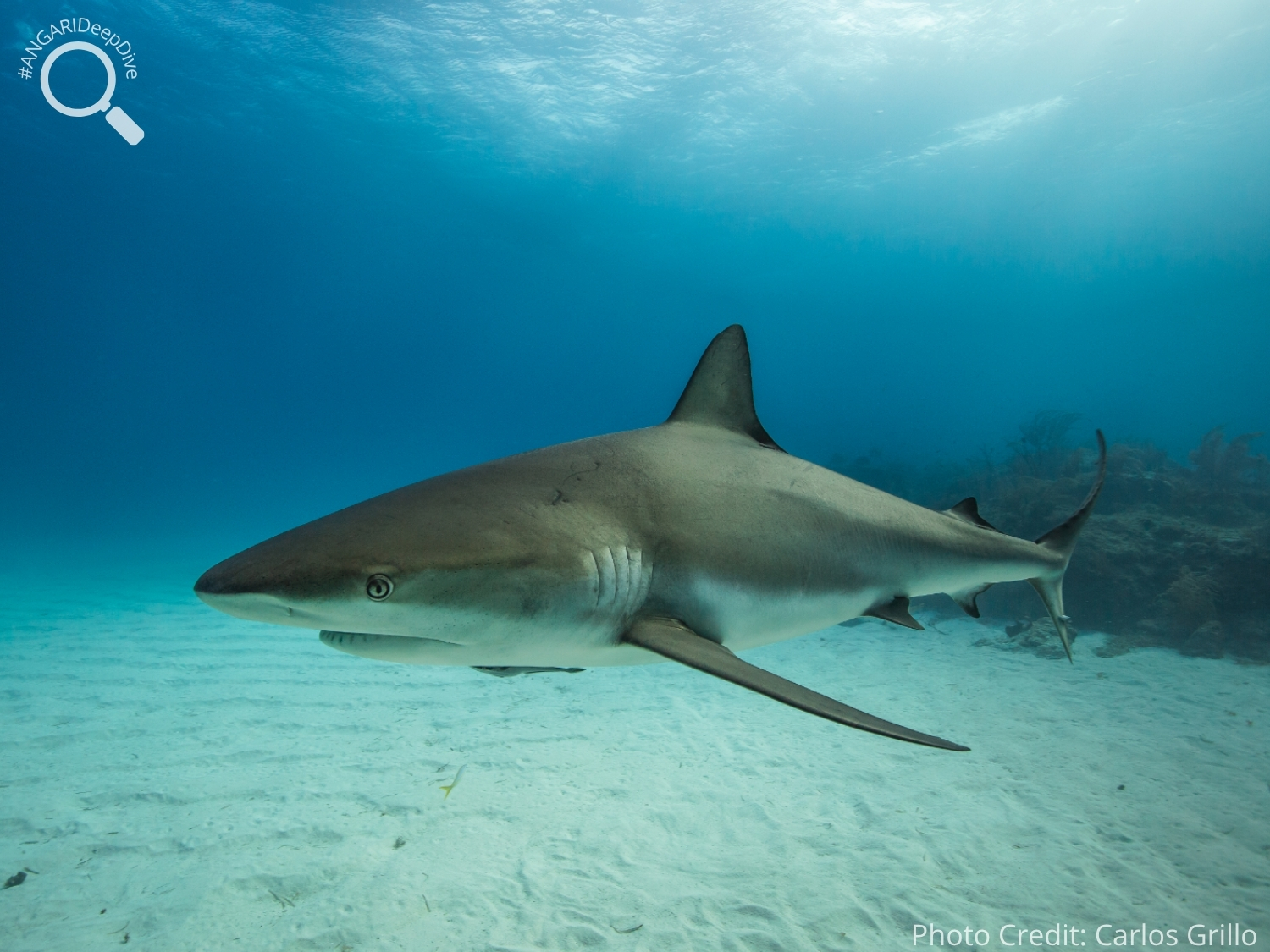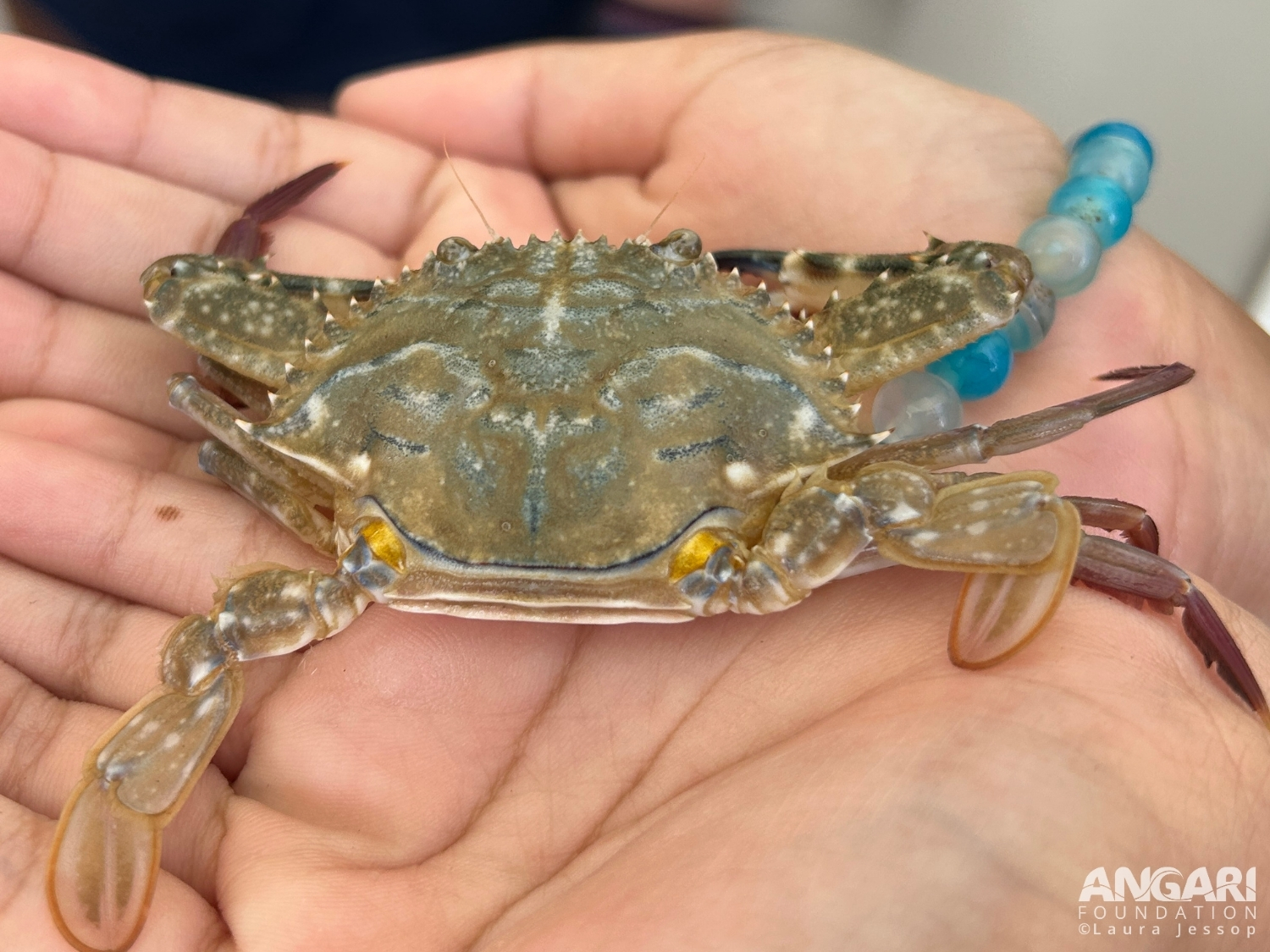Common sea fans are commonly found on coral reefs and can be identified by their purple tissue.
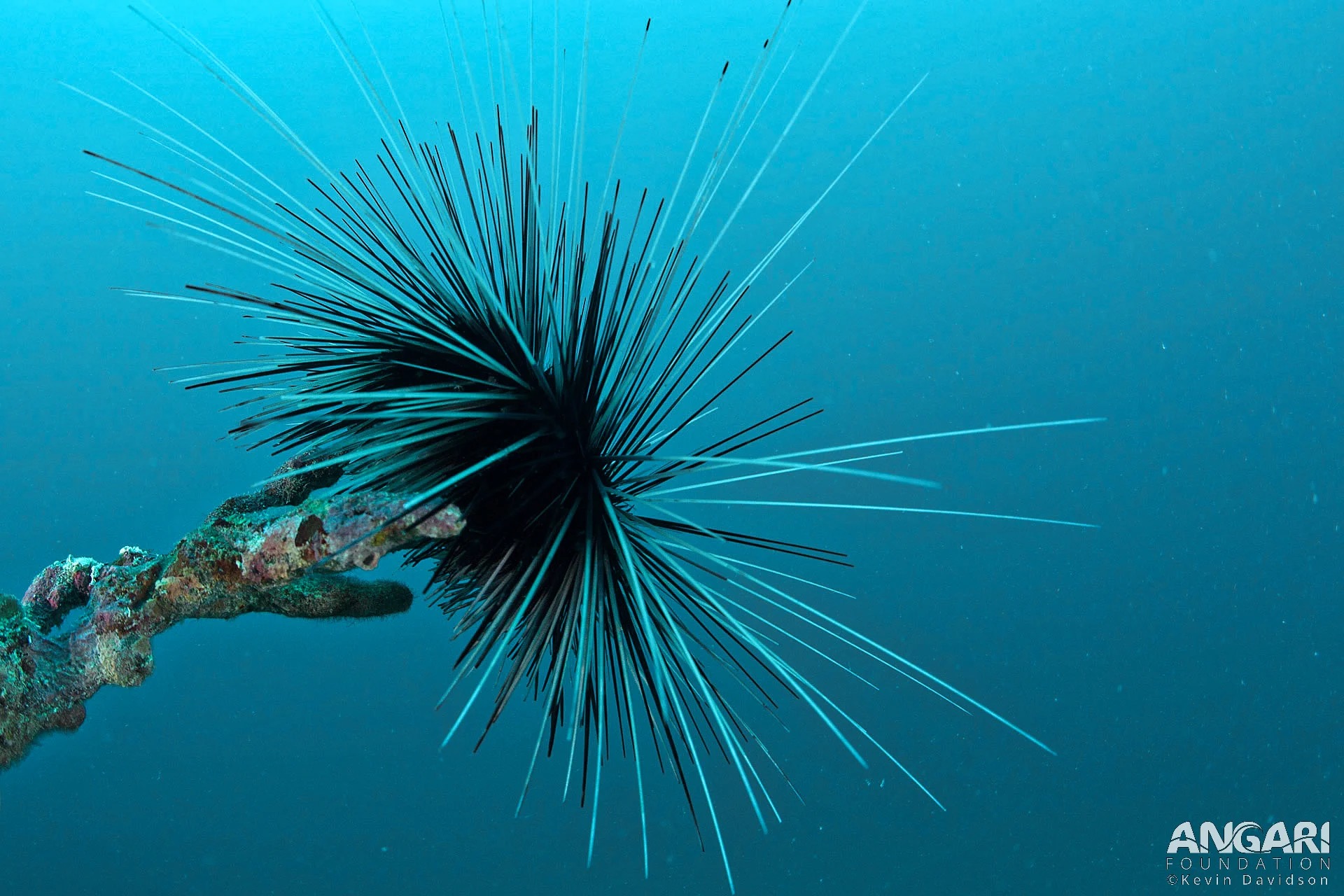
Long-Spined Sea Urchin (Diadema antillarum)
The long-spined sea urchin (Diadema antillarum) can be a bit intimidating with their spiky exteriors, but these urchins are some of the most fascinating and important species in the Caribbean and play a crucial role in supporting coral reef ecosystems! You can find long-spined sea urchins on tropical reefs throughout the Caribbean, from South Florida to the edges of the Caribbean Sea. They prefer the warm, shallow waters of the reef crest at depths of 10 – 20 feet.
Keep reading to learn about the urchin’s biology, natural history and critical conservation status!
#1: Sea urchins as a species is really old.
Sea urchins are some of the oldest species in the ocean and have existed relatively unchanged for over 450 million years, predating dinosaurs by ~200 million years! They belong to the phylum Echinodermata, or “spiny skin” in ancient Greek, which includes the urchins’ close relatives – sea stars, sand dollars and sea cucumbers. Almost all echinoderms have five identical body sections, and long-spined sea urchins are no exception. If you look closely beneath an urchin’s spines, you can see five calcium carbonate plates supporting its body.
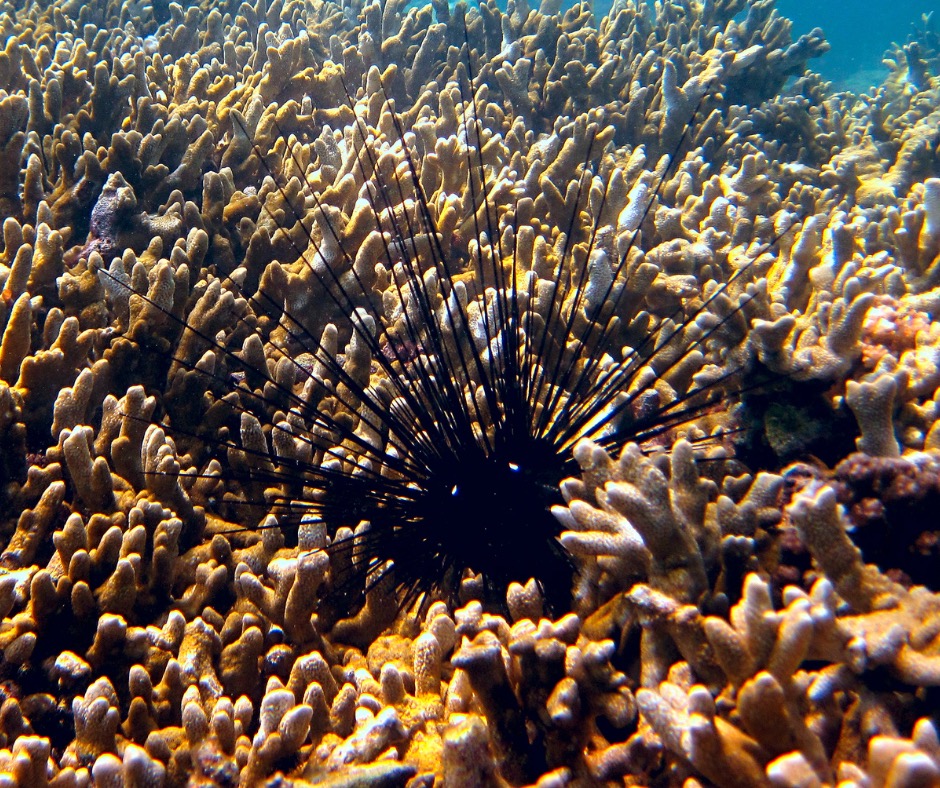
#2: Did you know the long-spined sea urchin uses hydraulics?
As their name implies, long-spined sea urchins are covered with long black and white stinging spines. They move on the reef using cylindrical “tube feet” that operate as simple hydraulics. As the urchin forces water through its respiratory system, the feet inflate and straighten, enabling it to walk and grasp food!
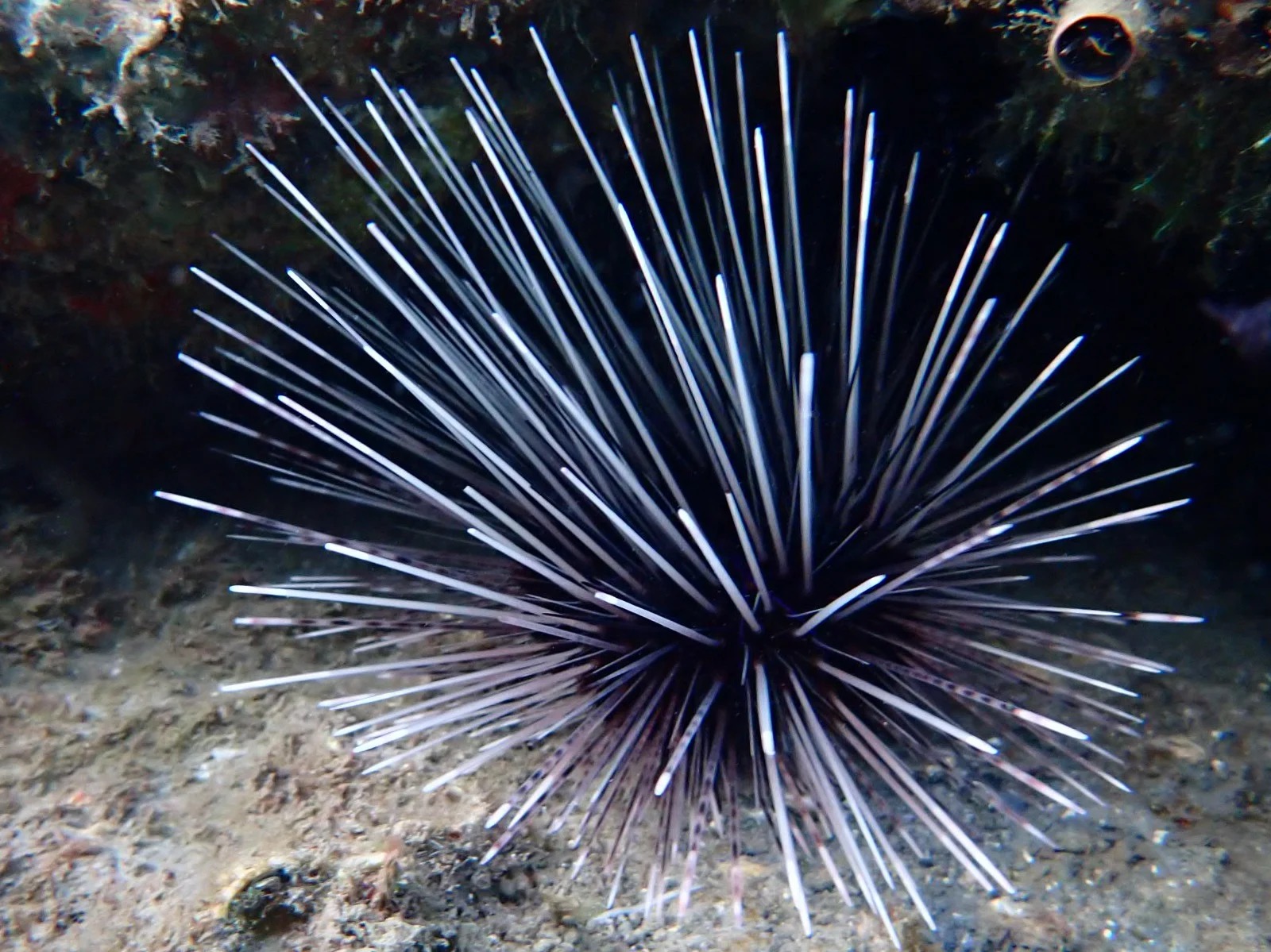
#3: Reproduction of the long-spined sea urchin
Long-spined sea urchins reproduce through broadcast spawning, which involves releasing their eggs directly into the water column, between July and September each year. Their eggs hatch into free-swimming larvae known as echinoplutaeus, which travel miles along ocean currents before settling on new reefs. After 4 to 6 weeks, the larvae mature into an urchin, lose its swimming structures and develop long spines. By reproducing this way, urchins can spread their offspring over great distances and expand their populations!
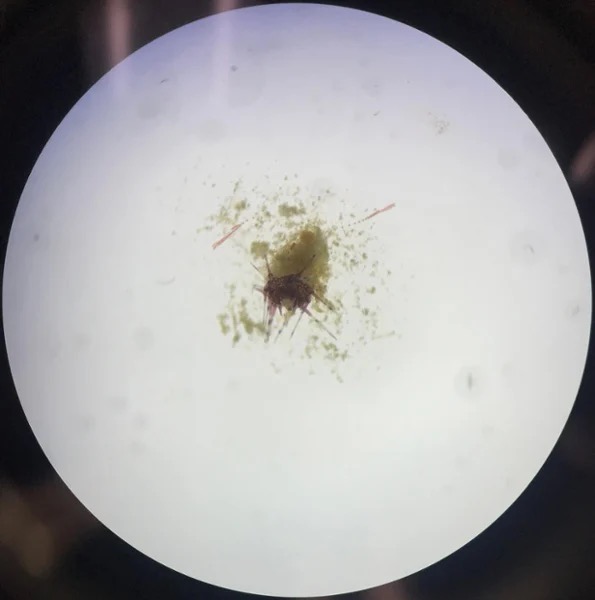
#4: Long-spined sea urchins are the lawnmowers of the ocean!
Long-spined sea urchins are voracious eaters, earning them the nickname lawnmowers of the ocean! Urchins scour the reef each night, consuming turf algae and plants. This grazing is crucial as algae and coral are in constant competition for space, and by removing algae, the urchins create clean areas for corals to settle and grow. Through this, urchins support the entire reef and are key to maintaining a healthy ecosystem!
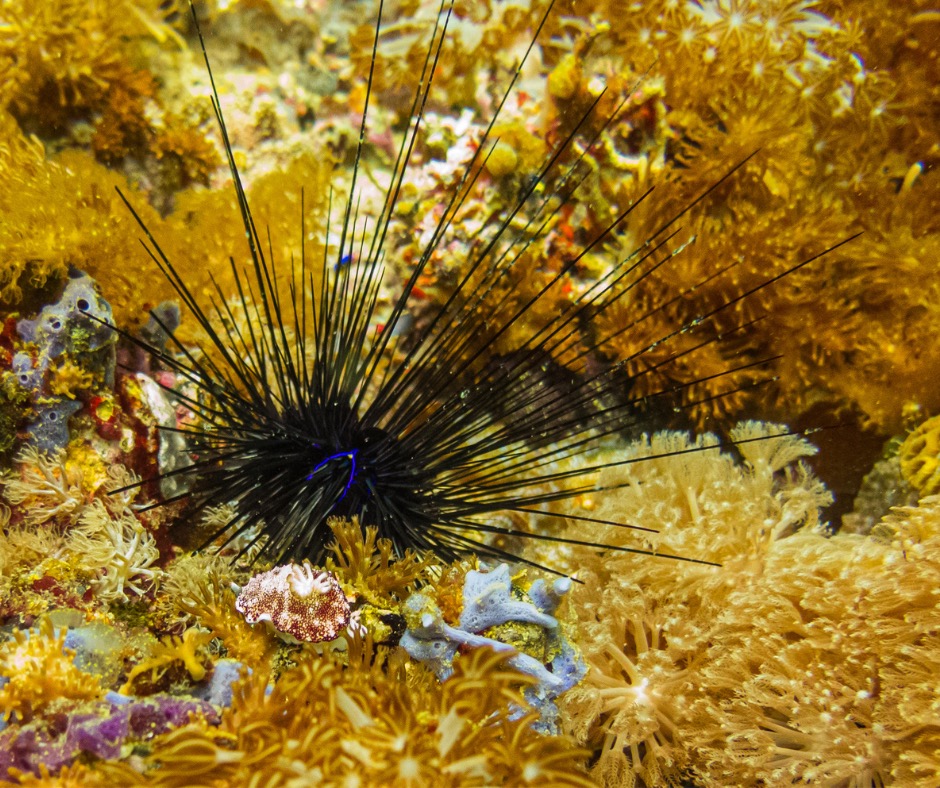
#5: Population collapse of the long-spined sea urchin
Long-spined sea urchins were once abundant in the Caribbean; however, in 1983 their populations collapsed and many reefs lost more than 97% of their urchins. The causes of this die-off are disputed, but scientists propose climate change, water quality problems and diseases introduced through untreated sewage dumping as possible factors.
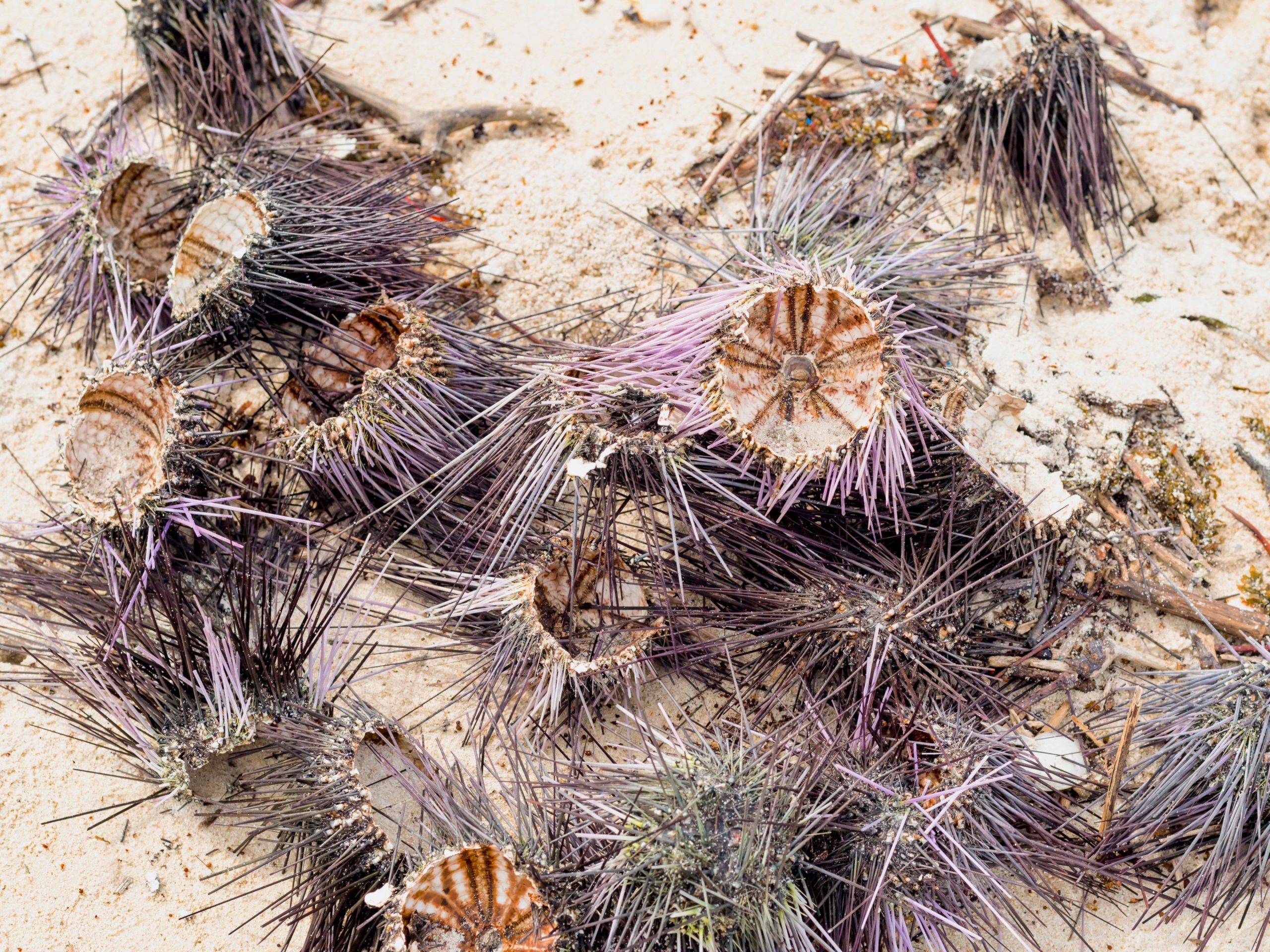
#6: Without the long-spined sea urchin, the balance of the reef is disrupted.
The mass die-off of long-spined sea urchins in the Caribbean has been disastrous for coral reefs. Without urchins to graze, algae has overgrown entire reefs, smothering live corals and preventing new coral larvae from settling. Scientists theorize that this has led to a “phase shift” in the Caribbean, in which regions that were once primarily home to corals are now fully dominated by algae. Without urchins, this phase shift will be very difficult to reverse.
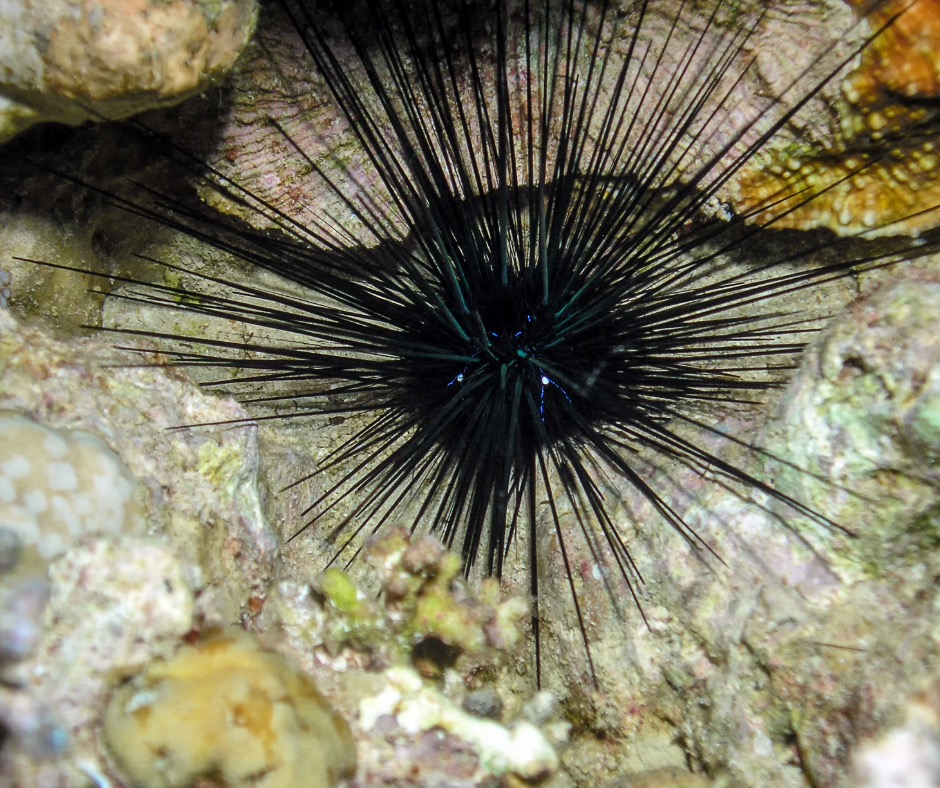
#7: How is the long-spined sea urchin being reintroduced?
One of the methods scientists are using to bring long-spined sea urchins back to reefs is transplantation. To do this, urchins are collected from healthy reefs and deliberately placed in areas where they are needed most.
Not all long-spined sea urchin populations were equally affected by die-off in the Caribbean. Urchin communities on Jamaica’s north shore have remained stable and continue to protect coral from algae overgrowth. Scientists hope to sustainably harvest these resilient urchins to rebuild the populations in Florida that have almost completely disappeared. The goal is for the new, stronger urchins to proliferate and restore balance to the reef!
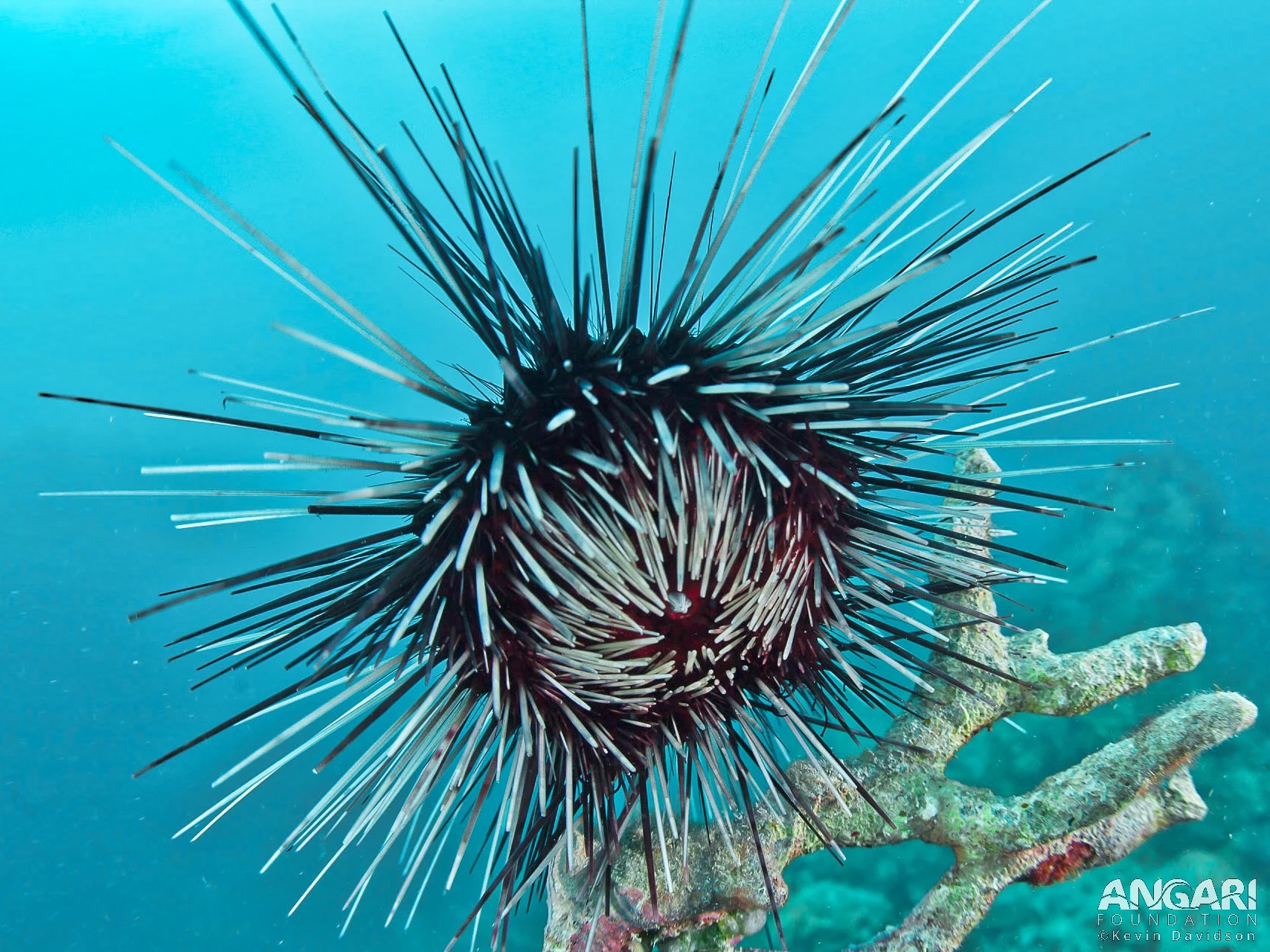
#8: Aquaculture may also offer hope for long-spined sea urchins.
These urchins have also been studied and raised in aquaculture facilities in hopes of more quickly populating the species in the wild. Aquacultures involves growing urchins in aquariums to a level of maturity before releasing them onto reefs. Developing an aquaculture methodology has not been easy; urchins have proven difficult to keep in aquariums or have failed to thrive on wild reefs after living in captivity. However, after years of research, scientists have developed procedures that can produce large numbers of mature long-spined sea urchins each year!
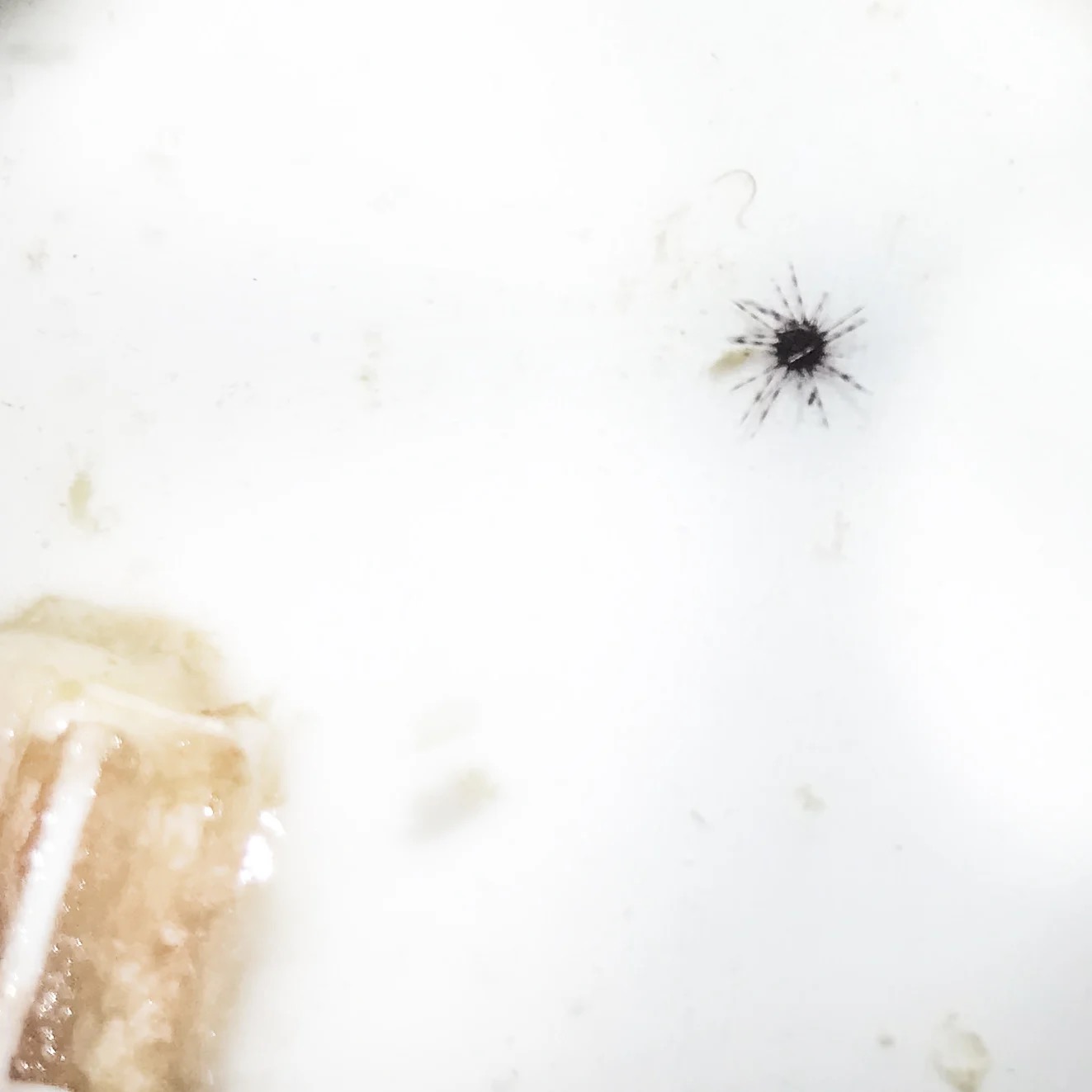
#9: Watch out for their spines!
The sharp spines of the long-spined sea urchin are extremely fragile and will snap and break off into whatever is trying to attack them. The spines are covered in a poisonous coating that is injected into any predator that gets pierced by a spine, therefore acting as a deterrent for smaller predators. Unfortunately for us, we also can accidentally be pierced by these spines if we don’t watch where we place our feet and hands! If you are injured by an urchin, try the following advice:
🟣 Remove any spines that are in your skin, keeping in mind they are very brittle
🟣 Clean the area with antiseptic to remove any bacteria from the wound
🟣 Soak your hand or foot in warm water
🟣 If there is any chance a spine is left in your skin, seek medical attention
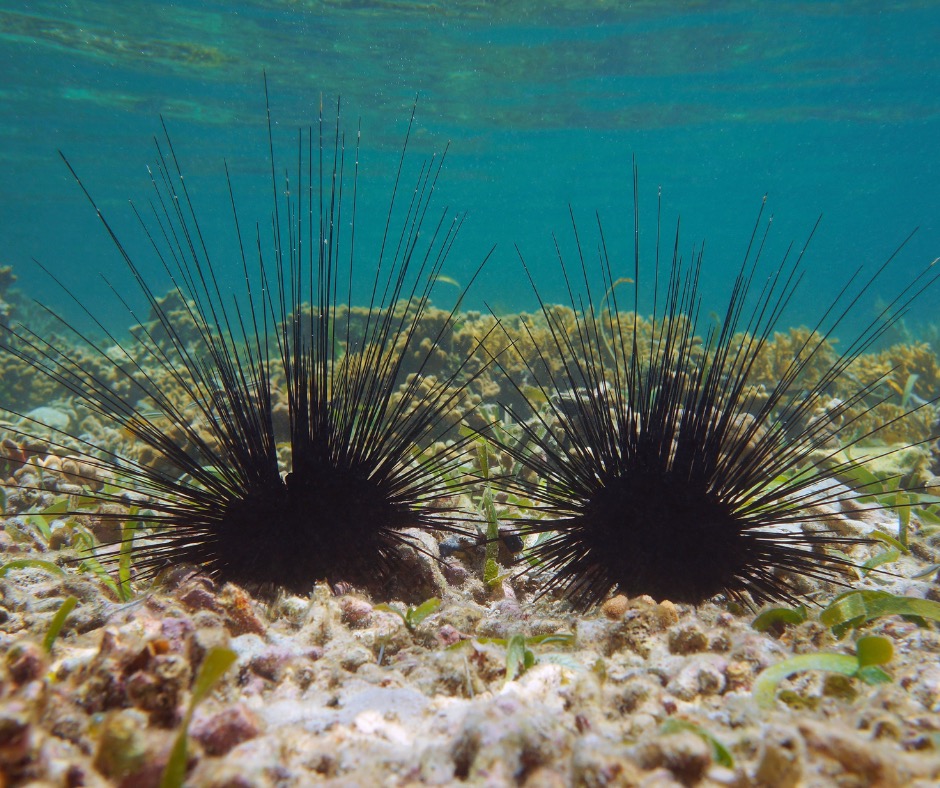
Like many reef organisms, this incredible species the long-spined sea urchin has been pushed to the brink by a combination of natural factors and human activity. However, despite the devastation that these urchins have endured, there is now more reason than ever to be hopeful. Scientists are working hard to develop long term solutions for this suffering population, and by supporting restoration and reef stewardship, we can build a new generation of long-spined sea urchins!
Additional Long-Spined Sea Urchin Resources:
1. Australian Museum – Long-Spined Sea Urchin
2. NOAA Podcast – Understanding Disease Impacts to Long-Spined Sea Urchins
3. Florida Fish and Wildlife Conservation Commission – Long-Spined Sea Urchin
4. Researchers Find Sea Urchin Die-Offs Threaten Caribbean Coral Reefs

